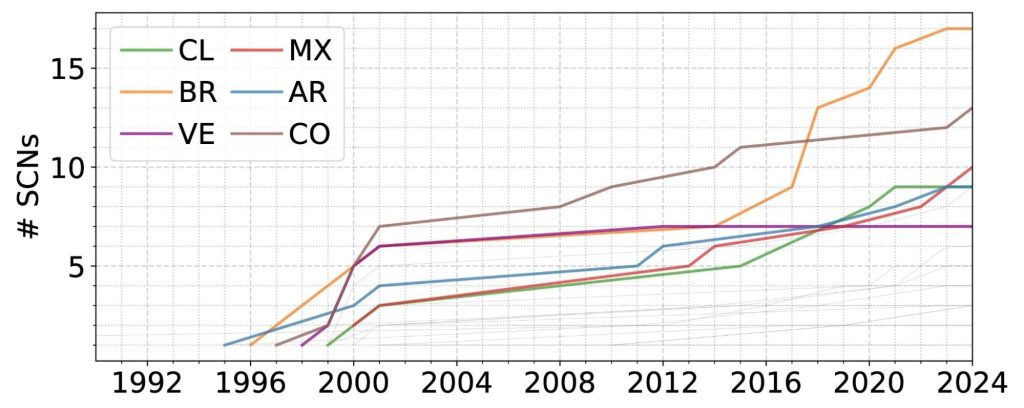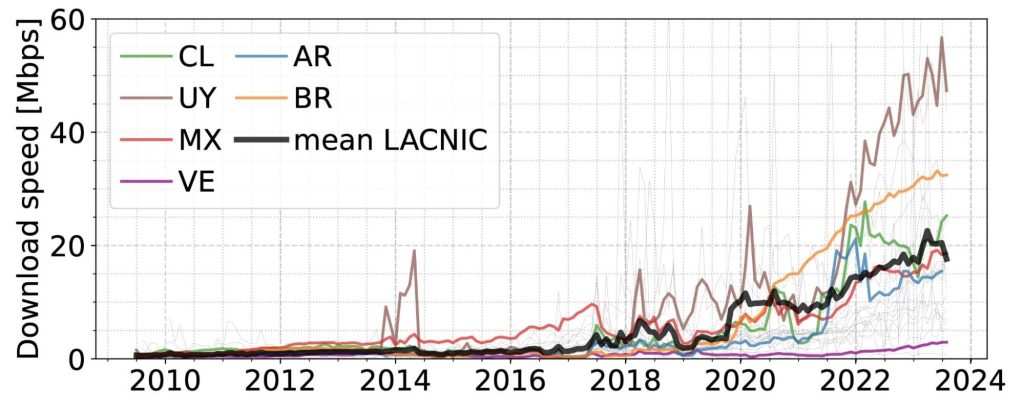In the past decade, Venezuela has faced a profound crisis that has impacted all corners of its society, from health and energy to the economy. Its Gross Domestic Product (GDP) per capita has contracted 77%, and inflation has soared to 32,000%!
A new study by computer science researchers at Northwestern University examines, for the first time, the impact of Venezuela’s multifaceted challenges on the country’s Internet infrastructure during this period.
According to the authors, understanding the repercussions of the crisis on such a critical component of modern society as the Internet becomes imperative for charting a path to recovery.
The study offers a comprehensive view of Venezuela’s deteriorating Internet infrastructure, from core infrastructure to access networks.
One New Submarine Cable, No New IXPs in 20 years
Over the last 20 years, Latin America has seen substantial growth in critical network infrastructure, including submarine cables and Internet Exchange Points (IXPs) — to optimize traffic exchange locally.
Read: How Will Guiana’s Economic Sliding Doors Impact Region’s Internet Resilience?
This has not been the case in Venezuela, where only one new submarine cable connection to Cuba has been added since 2001 (Figure 1), and no new IXPs have been established. In comparison, its neighbor, Colombia, has added six new submarine cable networks and seven IXPs. This lack of investment has left Venezuela’s state-owned Internet provider, CANTV, without US-based transit routes and increased its reliance on domestic markets.

Internet Speeds Nearly 10x Slower Than Region Average
The consequences of these discrepancies are stark when we consider Internet performance.
For instance, while global download speeds have improved significantly, Venezuela’s average download speed has stagnated below 1 Mbps for over a decade. In contrast, countries such as Argentina and Brazil, once peers to Venezuela, have experienced sustained growth in their Internet speeds. The median speed for the rest of Latin America is around 20 Mbps (Figure 2).

Venezuela’s Domain Name System (DNS) infrastructure also shows clear signs of decline. For the DNS to be efficient, servers should be close to users to minimize response time and ensure resilience. The study shows that the few DNS servers running within the country have become unreachable for within the country, and users relying on Google’s popular public DNS service face latencies twice as high as the regional average.
Revitalizing Internet Infrastructure Critical For Future Recovery
Over the last decade, Venezuela has undergone one of the most profound crises in modern history, probably the deepest crisis of any non-war-ridden country in recent times. The situation has significantly impacted the country’s network infrastructure, and revitalizing this critical infrastructure must be part of any future recovery effort.
The study paper will be presented at the 2024 ACM SIGCOMM conference, the flagship annual conference of the Special Interest Group on Data Communication, in Sydney, Australia.
Esteban Carisimo is a Postdoctoral Researcher at AquaLab in the Department of Computer Science at Northwestern University.
Contributors: Rashna Kumar (Northwestern University), Caleb J. Wang (Northwestern University), Santiago Klein (Universidad de Buenos Aires) and Fabián E. Bustamante (Northwestern University).
The views expressed by the authors of this blog are their own and do not necessarily reflect the views of the Internet Society.


